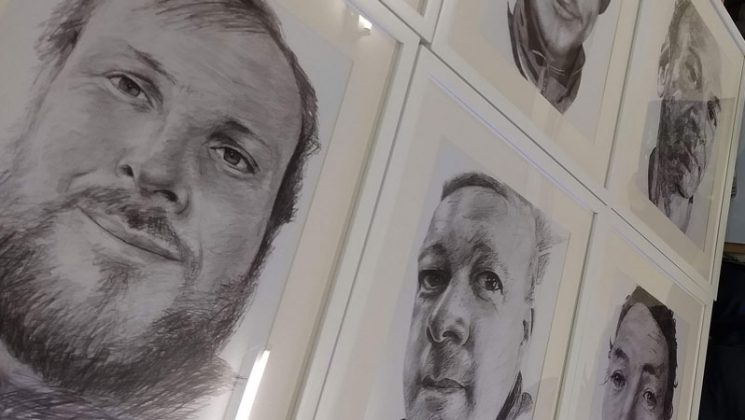James Fox is a UNISON steward originally from Glasgow, now living in Lancaster. He works part time as a technician in a local secondary school, but is also an artist, specialising in textiles and fabrics.
I have been volunteering at Lancaster and District Homeless Action Service for the last two years. The service works with people from many different backgrounds where circumstances have led them to sleeping rough or struggling to manage their own accommodation.
The service is committed to helping people find accommodation and learn the life skills essential for independent living, and to providing help and support with the job market.
To begin with, I helped in the kitchen, giving out breakfasts and preparing lunch for the centre’s clients. Initially, I wanted to use working in the kitchen to get some time away from making art in the studio. But the staff, knowing I was a working artist, asked if I would deliver a few art and craft workshops for the clients.
This under-represented group on the edge of society needs to be seen and acknowledge
Tentatively, I agreed and suggested that we make some cards and gifts that we could sell to bring in extra funds and awareness.
I worked out that it was best to begin the project on my own and then the clients would eventually gravitate towards what I was doing, and if they were interested, and in the right frame of mind they would engage with the activity.
There was no presumption on them whether they finished the work or even stuck to the task. This seemed to give them a freedom to dip in and out as they liked and for me not to feel pressured to deliver a regular teacher-pupil relationship.
Over about a year I built up a strong enough connection with some of the regular clients, and a friendly rapport developed between us. There was not only some good work being produced which we were beginning to sell, I also really looked forward to seeing the clients and catching up with them as I would any of my friends.
For a while I had been thinking of doing some of my own art work related to my time at the service. Eventually I broached the subject with a few of the regular clients with the idea of producing a series of portraits.
Initially, I felt the clients would find this process patronising or uncomfortable and be apprehensive at maybe having their image shown in public.
But, to my surprise, most of the clients I spoke with thought this was a good idea. If we had not built a relationship through mutual interest and respect I think it would have been different.
I made the work to celebrate them as individuals
I began the process by taking photographs of as many clients as I could and then began a series of quick drawings using different techniques – pen and ink, pencil, paint.
After that I moved on to working on the sewing machine using a free straight stitch to sketch with. This gave me a feel for the faces that I thought would work best for this project.
Initially, I was going to work straight onto cloth as is my usual method, but after discussion with the sitters I thought it would be more appealing to them if I produced a large finished drawing that was an accurate representation of them. The drawings were then used as the basis for producing textile portraits.
The outcome of the project was really positive for all concerned. The service benefitted from local press and national coverage through a cover feature in Embroidery Magazine. There was also a feature on BBC radio and an exhibition of the work at the Storey Institute Gallery in Lancaster.
All of this was great. But what I cherish most is when one of the clients at the homeless centre, after reading a feature in the Lancaster Guardian, said quietly under his breath, “That’s really quite good isn’t it!”
In this age of austerity and draconian changes to the benefit system, with at least 32,000 recorded homeless people in the UK, and this figure growing at an alarming rate, it seems that this under-represented group on the edge of society needs to be seen and acknowledged in whatever ways possible.
This project was not done to pity them. I made the work to celebrate them as individuals who, when you get to know them, can display a sense of humour and humanity far richer than a lot of people.
- Find out more about James and his work

